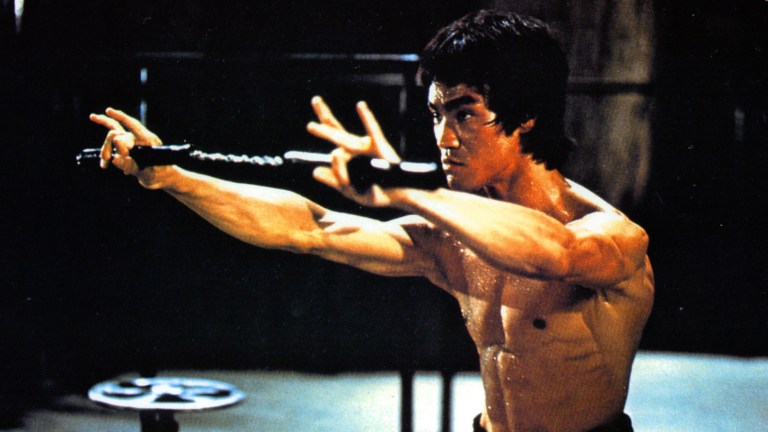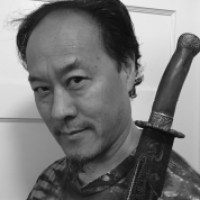The Hong Kong Kung Fu Movies You Need to Watch Next If You Already Love Bruce Lee
Hong Kong Kung Fu cinema is an overwhelmingly massive genre, so huge that it’s hard to know where to begin. Here are five pivotal Hong Kong Kung Fu films that are great places to start.

There are Kung Fu movies. Then there are Hong Kong Kung Fu movies. Starting in the ’70s, Hong Kong filmmakers dominated the martial arts genre with a unique brand of Hong Kong ballistic action, white-knuckle stunts, and exquisite fight choreography. Towering Hong Kong studios like Shaw Brothers and Golden Harvest were the prolific grindhouses that brought us Bruce Lee and so many other action movie stars at an astonishingly bounteous rate.
If you’re already familiar with Bruce Lee’s work in Hong Kong cinema and aren’t sure where to go next on your martial arts movie journey, or which stars’ filmographies you should be checking out, here are five pivotal Hong Kong martial arts films worthy of your attention. Each of these movie either launched or are part of venerated Hong Kong franchises, so you’ll have plenty to watch once you dive in!
The 36th Chamber of Shaolin a.k.a. The Master Killer (1978)
The 36th Chamber of Shaolin is the granddaddy of “wax on, wax off,” with Gordon Liu working his way through a wild array of obscure training methods inside the birthplace of Kung Fu, the Shaolin Temple. Considered as one of the greatest Kung Fu films ever made, this inspired the title of Wu-Tang Clan’s first album, Enter the Wu-Tang (36 Chambers).
At just shy of 2 hours, the film has three major acts: Act 1 where San Te (Gordon Liu) is a scholar with no Kung Fu skills, Act 2 where San Te enters Shaolin to learn Kung Fu in specialized training chambers, and Act 3 where San Te forms the five elders and fights against the Qing Dynasty. It’s really all about Act 2. Kung Fu flick cliché training sequences are taken to a whole new groundbreaking level (the Iron Head training sequence alone is brilliant Kung Fu). The centerpiece fight is a climactic duel between Liu wielding a three-section staff versus Lee Hoi-Sang and his whirling butterfly knives.
Five Deadly Venoms (1978)
Five warriors of the Poison Clan secretly train to learn special Kung Fu skills while masked so that they can hide their identities from each other. But when one betrays the others, it’s a hunt to solve who is who. Chang Cheh directs this Shaw Brothers classic which launched the Venoms Mob, a group of martial actors that dominated the genre in the late ’70s and early ’80s.
The original Five Venoms are Scorpion (Sun Chien), Lizard (Phillip Kwok), Toad (Lo Meng), Snake (Wei Pai) and Centipede (Lu Feng), plus there is their junior Kung Fu brother Yang Tieh (Chiang Sheng). The plot is complicated, yet well-told. There are some strangely disturbing torture scenes – early waterboarding, a prickly iron maiden, and a “throat hook” are particularly harsh. It also poaches the Monty Python and the Holy Grail‘s soundtrack. But when all these pieces are put together, it all just works, turning Five Deadly Venoms into one of the best Kung Fu flicks ever. It’s epic intrigue with dazzling Kung Fu.
Once Upon a Time in China (1991)
Jet Li teams with Director Tsui Hark for a visionary epic loosely based on real life folk hero Wong Fei Hung. Credited with revitalizing the Kung Fu genre in the ’90s, Li’s acrobatic fighting style blends with Tsui’s extravagant cinematic sensibilities for a grandiose game changer of martial arts films. Like each of these recommendations, it spearheaded a franchise of sequels.
The film begins with a ridiculous tightrope lion dancing sequence that clues us in right away that we must trade in our understanding of physics for this wire-fu extravaganza. No one moves like Jet in his prime. He makes insanely high kicks look easy. He gives umbrella Kung Fu new meaning. Jet’s combos are just unreal despite the undercranking, moving with such effortless speed and awe-inspiring flexibility.
The film has some goofy humor, copious drool, and blood spitting, as well as some captivating cinematic compositions with bars, shadows, wind, and rain. The final fight balancing on ladders is as outrageous as it is gorgeous – and the wire-fu is spectacular. Remember this was way before CGI, so the stunts are real.
Police Story 3: Supercop (1992)
The third of Jackie Chan’s modern-day cop actioners marks the return of Michelle Yeoh after she quit moviemaking in 1987. Yeoh plays a strict mainland Chinese cop opposite Chan’s risky hero. The finale fight atop a moving train is packed with truly death-defying stunts for both actors, including Yeoh’s legendary motorcycle jump onto a moving train.
All three of the Police Story films are total thrill rides but Yeoh takes this threequel to the next level. Just as Marvel has made post-credits scenes a signature part of the movie-watching experience, Chan’s films are known for stunt outtakes that are truly terrifying. In one featured in the credits of Supercop, Yeoh falls off the top of a moving train into the “safety net,” which is just a stack of empty cardboard boxes, typical safety gear for Hong Kong action movies back then. Because they show just how dangerous making these films could be at the time, some of these outtakes end up being even more titillating than the ones in the movie.
Ip Man (2008)
When Donnie Yen stepped into the role of Bruce Lee’s real life Wing Chun Kung Fu master, his dignified portrayal of the grandmaster catapulted him into Hong Kong’s leading star. Another film that reinvigorated the genre for a new era, Yen’s Kung Fu shines under the choreographic direction of Jackie Chan’s elder Kung Fu brother, Sammo Hung.
Set in Foshan in the 1930s, it begins in rich Chinese opulence and then pulls an extreme tone change into the squalor of the Japanese occupation after the 1937 Marco Polo Bridge Incident. This tragic historical event gives the film its heart as Ip Man must rise above the chaos to do the right thing.
Ip Chun, Ip Man’s real life eldest son, served as a technical consultant for the film. The fight choreography is painstakingly sharp. Wing Chun is a close combat style and Yen’s Wushu spin on the form simply kicks ass. Yen’s precision keeps the fighting tight throughout the entire franchise.
